The year is 2026, and the ever-changing landscape of marketing continues to evolve. As businesses strive for success, there's one concept that remains crucial: the marketing funnel. But why are marketing funnels so essential in today's competitive environment?
The answer lies in their ability to guide potential customers through the buyer's journey, from awareness to purchase and beyond.
Are you ready to embark on a transformative journey of your own? This blog post will reveal the mysteries of how to create a marketing funnel, step by step.
From understanding the key components to nurturing customer relationships, converting leads and building a loyalty program, you'll be well-equipped to conquer the world of digital marketing with confidence and finesse.
Short Summary
-
Marketing funnels have evolved from a linear model to a nonlinear one, taking advantage of digital technology.
-
Identifying target audiences and creating buyer personas is essential for understanding customers and creating content that resonates with them.
-
Setting goals, choosing marketing tactics tailored to the audience needs, tracking metrics & A/B testing are key components in optimizing your funnel strategy for successful conversions.
Understanding the Marketing Funnel
The marketing funnel is a roadmap that businesses use to strategize the process of transforming prospects into customers. But marketing funnels are not a one-size-fits-all solution. They are dynamic, evolving entities that adapt to the ever-changing needs of customers and businesses alike.
With the advent of digital marketing, traditional marketing funnels have given way to more complex, nonlinear models. Today's marketing funnels incorporate multiple touch points and customer journeys, ensuring that no stone is left unturned in guiding potential customers towards a purchase.
The Evolution of Marketing Funnels
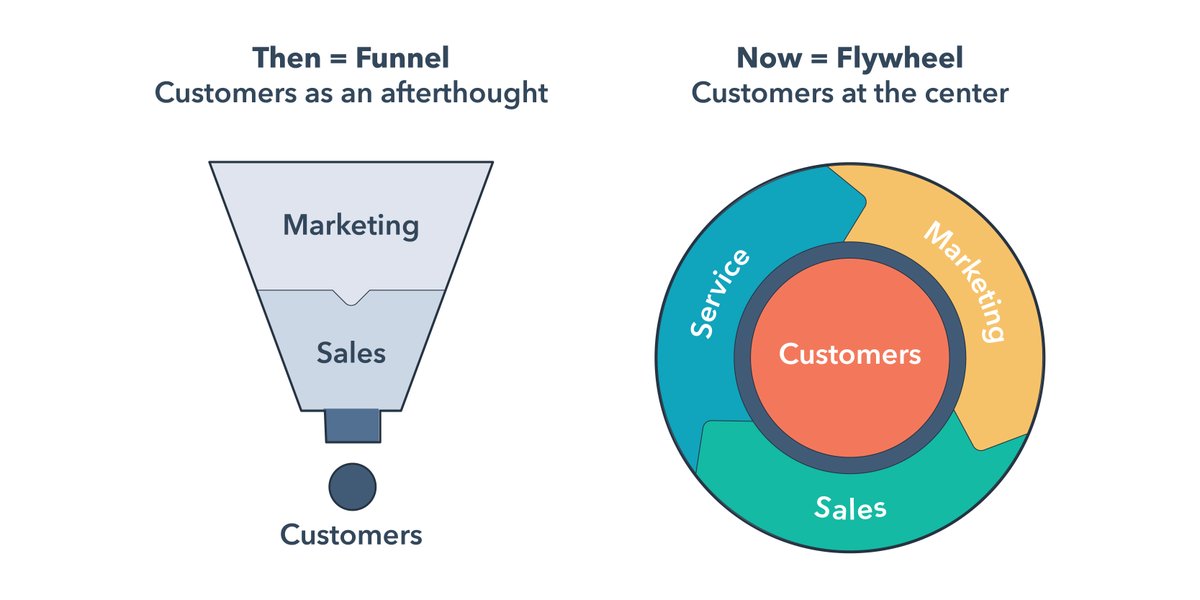
The evolution of marketing funnels can be attributed to the digital era and the vast array of products and services available to customers. The internet has had a significant influence on this transformation, with the traditional linear marketing funnel template being replaced by a more intricate, nonlinear model that encompasses multiple touch points and customer journeys.
The digital marketing funnel provides a more comprehensive customer experience, focusing on education, engagement, and fostering a connection with the informed consumer. The goal is to create a seamless customer journey, that caters to the unique needs and preferences of each customer, ultimately leading to a more successful marketing strategy.
Key Components of a Marketing Funnel
The marketing funnel comprises several stages that potential customers navigate through, including awareness, interest, consideration, intent, evaluation, and decision. Each stage serves a specific purpose, guiding the prospective customer's journey and ensuring that the right marketing messages are delivered at the right time.
Understanding the key components of a marketing funnel is essential for crafting an effective marketing strategy. It enables businesses to tailor their efforts to the needs and preferences of their target audience, ultimately leading to greater success in converting potential customers into paying customers.
Identifying Your Target Audience
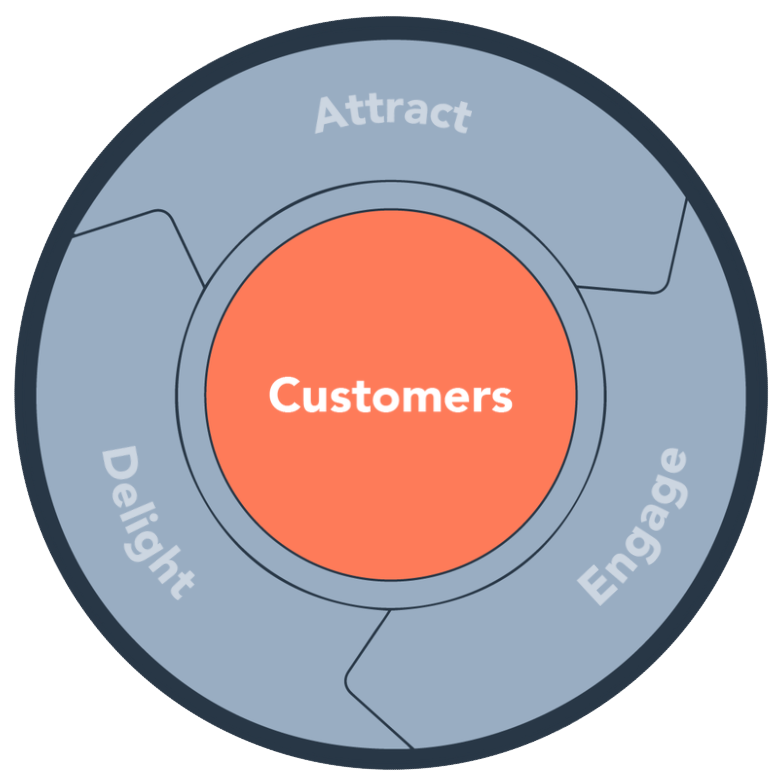
To create an effective marketing funnel, it's essential to understand and identify your target market segments. Knowing who your customers are and what they want allows you to customize your marketing efforts, ensuring that your marketing messages resonate with the right people.
There are several methods for understanding your target customers, such as listening to existing customers' feedback, distributing surveys, examining interactions with your website and web content, and analyzing web data.
By gaining a deep understanding of your targeted addressable market, you can create a marketing funnel that speaks directly to their needs and preferences, ultimately leading to greater success.
Creating Laser Focused Buyer Personas
Buyer personas are biased, yet comprehensive characterizations of your target customers, providing insights into their needs and preferences. When planning to create buyer personas is a crucial step in identifying your target audience, as they allow you to tailor your marketing efforts and content to meet the specific requirements of your potential customers.
Constructing buyer persona mapping involves gathering data from various sources, such as customer feedback, surveys, and Google analytics. By understanding the unique challenges, goals, and pain points of your target customers, you can create a content marketing that that resonates with them, ultimately leading to a more effective marketing funnel.
Analyzing Customer Behavior
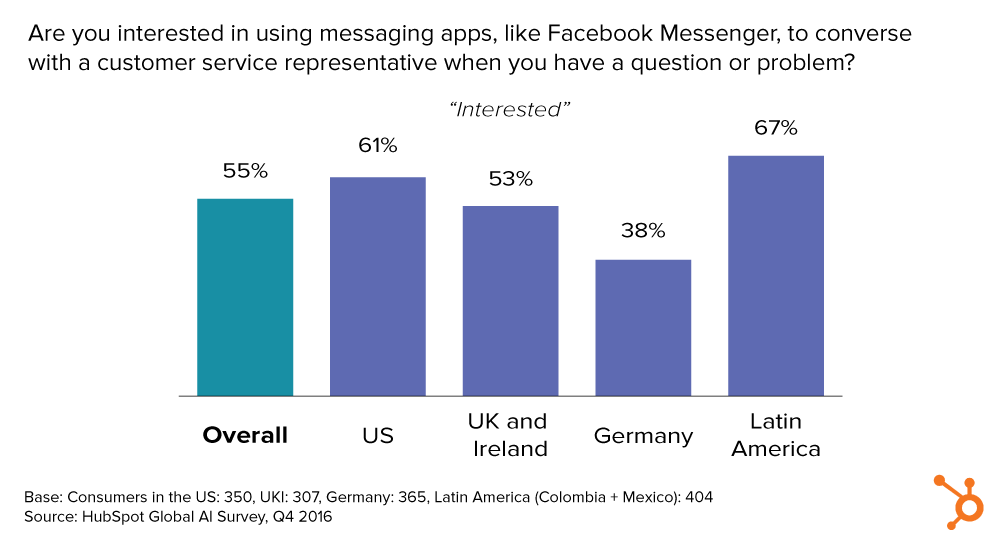
Analyzing customer behavior is an essential aspect of optimizing your marketing funnel. By doing keyword research and examining how customers interact with your website, web content, and marketing campaigns, you can identify trends and patterns that can be leveraged to improve your marketing strategy.
Using tools such as Google Analytics, you can track various metrics and gather valuable insights into your customers' behavior. This information can be used to refine your marketing funnel, ensuring that it effectively guides potential customers through their journey and ultimately results in successful conversions.
Developing a Marketing Funnel Strategy

Once you have a solid understanding of your target audience and their needs, it's time to develop a marketing funnel strategy. This involves setting goals for each stage of customer journey within the marketing funnel stages and choosing the appropriate marketing best practices to achieve those goals.
By establishing clear objectives for each stage of the funnel marketing along, you can measure progress and quickly identify areas of underperformance.
Additionally, selecting the right marketing channel tactics for your great-fit leads ensures that your marketing funnel strategy efforts resonate with your existing customers more, leading to greater success in converting potential customers into paying customers.
Setting Goals for Each Stage
Setting SMART (specific, measurable, attainable, relevant, and time-bound) goals for each stage of the marketing funnel is crucial for creating a successful marketing strategy.
These goals help you identify areas of improvement and measure progress, ultimately enabling you to optimize your marketing funnel for maximum effectiveness.
For example, you might set a goal to increase website visits by 20% in the awareness stage, generate a 10% increase in leads during the interest stage, and achieve a 5% increase in conversions at the decision stage. By establishing clear, measurable goals for each stage, you can track your progress and make data-driven decisions to continuously improve your marketing funnel.
Choosing Marketing Tactics
Selecting the right marketing channel efforts for each stage of the funnel marketing, is essential for achieving your goals and maximizing the effectiveness of your funnel marketing strategy. To choose the most suitable tactics, consider your target segmented audiences, the objectives of each stage, and the resources available to you.
For your sales team for example, in the awareness stage, you might use content marketing and SEO strategies to generate interest in your brand. In the consideration stage, you could employ email marketing campaigns and targeted ads to nurture leads and showcase the value of your products or services.
By carefully selecting marketing channel tactics relevant keywords that align with your goals and demographics, you can create a marketing funnel template that effectively guides qualified leads through their journey.
Creating Content for Your Marketing Funnel
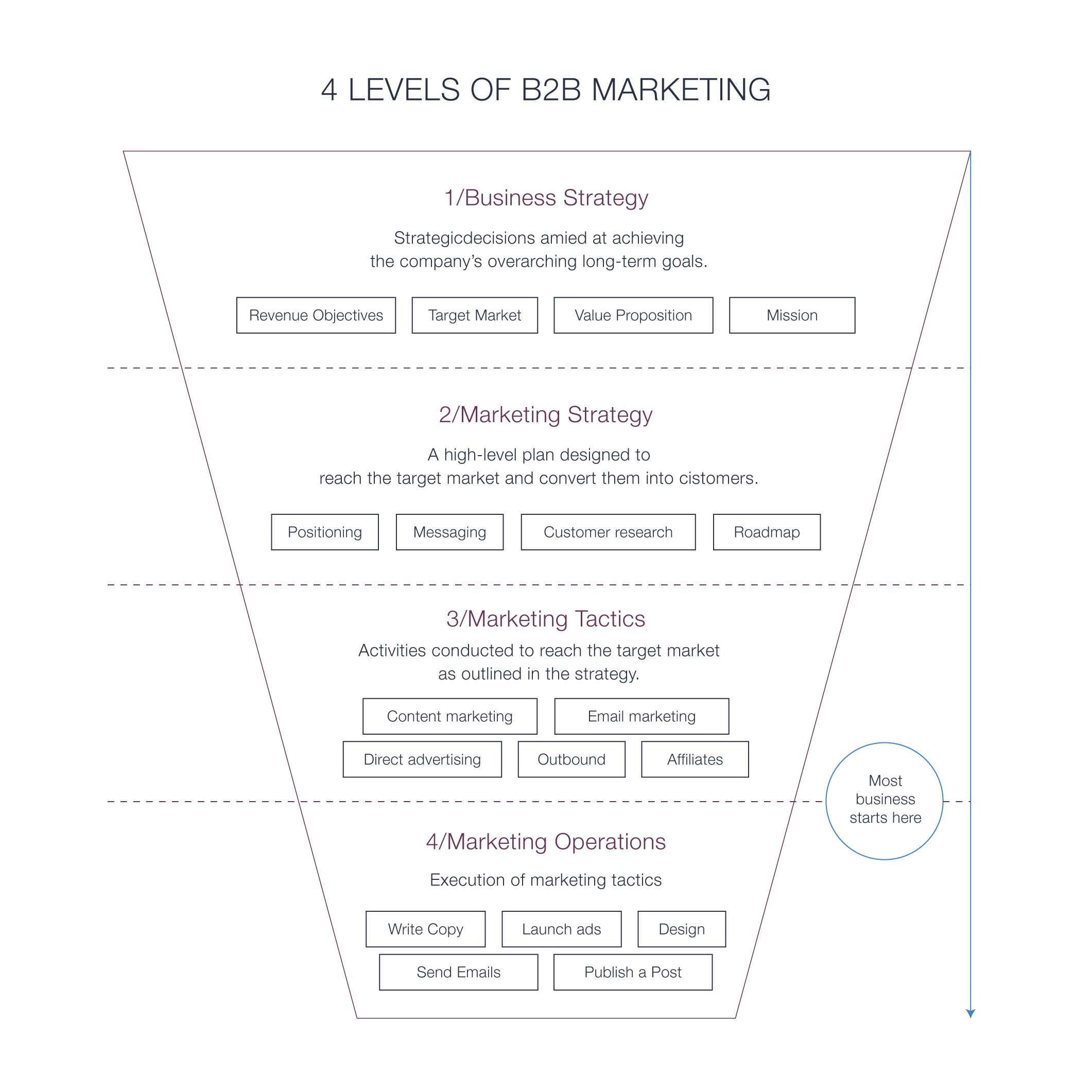
Content plays a vital role in the success of your marketing funnel, as it serves to engage and inform potential clients at each stage of their buying journey.
When you create content across the buyer's journey that is tailored to the unique needs and preferences of your target audience, you can ensure that your marketing funnel effectively guides customers towards making a purchase.
From top-of-funnel content focused on brand awareness to bottom-of-funnel content that inspires purchase, crafting the right content for each stage is essential. This also helps to create look-alike audiences to target and capture the attention of good-fit marketing leads, but also provides them with all the resources and information they need to make informed decisions and ultimately become loyal customers.
Top of the Funnel (TOFU) Content
Top of the funnel (TOFU) content marketing is designed to draw in as many targeted visitors as possible with relevant content that piques their interest. This stage content marketing focuses on building brand awareness link building, and generating interest without pressuring prospects to make a purchase.
Examples of TOFU content include educational blog posts, infographics, and videos that provide value to the reader while subtly introducing prospective customer to your brand. By creating engaging and informative TOFU content, you can effectively capture the attention of marketing prospects and guide them towards the next stage of the marketing funnel.
Middle of the Funnel (MOFU) Content
Most often, middle of the purchase funnel, (MOFU) content is focused on providing value and encouraging marketing qualified leads to opt-in to your marketing approach. This stage of purchase funnel is crucial for nurturing leads and building trust with your target audience.
Examples of MOFU content could include webinars, case studies, and white papers that showcase the benefits and advantages of your products or services to repeat customers.
By offering content that is tailored to the needs and preferences of your target audience, you can effectively guide potential customers through the consideration and purchase stage, and towards making a purchase.
Bottom of the Funnel (BOFU) Content
Bottom of the funnel (BOFU) content is designed to motivate leads to make a purchase by providing compelling reasons to do so. This stage traditional marketing funnel focuses on presenting limited-time specials, success stories, and other persuasive content that inspires action.
Examples of BOFU content could include detailed product demonstrations, customer testimonials, and exclusive offers that showcase the value and benefits of your products or services. By creating content that speaks directly to the needs and preferences of your target audience, you can effectively guide possible customers towards making a purchase and becoming loyal customers.
Implementing and Optimizing Your Marketing Funnel
Once you have developed a marketing funnel strategy and created content for each stage, it's time to implement and optimize your conversion funnel metrics. This involves visual representation of tracking performance of marketing funnel metrics and, such other metrics such as website visits, leads, and conversions, to measure the effectiveness of your marketing tactical work..
Optimizing your marketing funnel is an ongoing process that requires experimentation and continuous improvement. By monitoring performance metrics and conducting A/B testing, you can identify areas of underperformance and make data-driven decisions to optimize your funnel for superior performance.
Tracking and Analyzing Performance Metrics
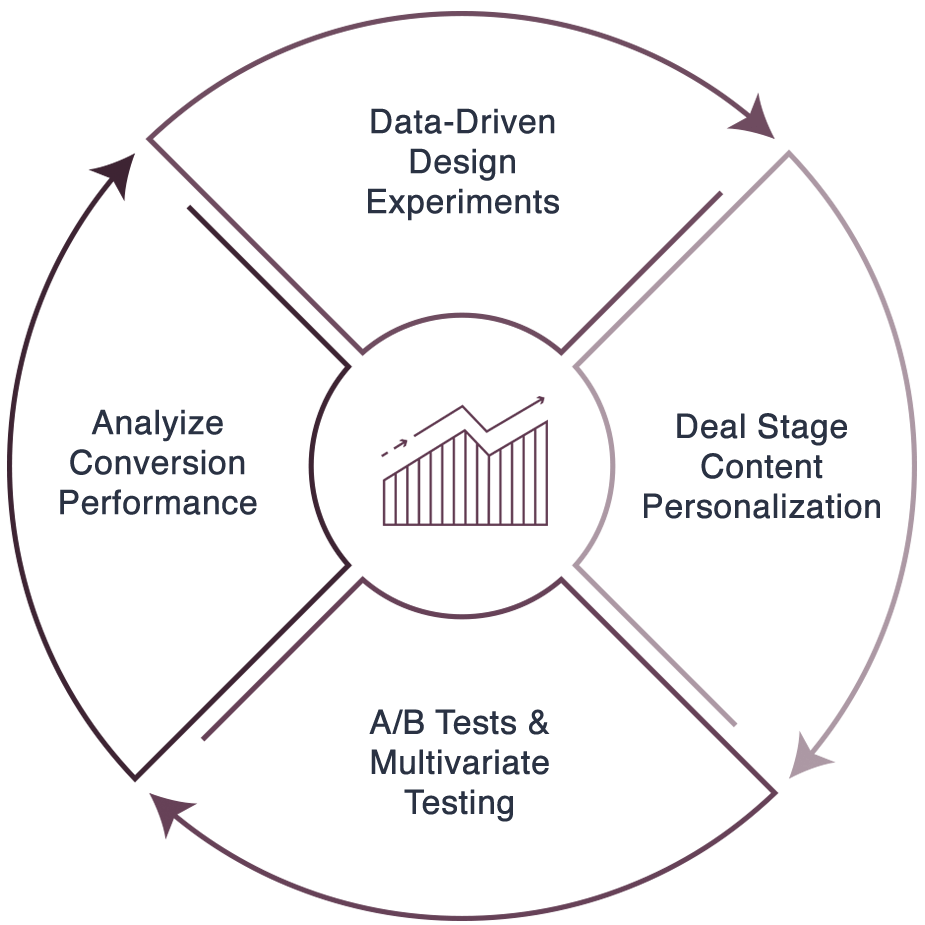
Monitoring performance metrics is essential for evaluating the effectiveness of your marketing funnel and identifying areas of improvement. By tracking metrics such as page views, impressions, click-through rates, and conversion rates, you can gain valuable insights into the success of your marketing funnel activities and make data-driven decisions to optimize your funnel.
Tools such as Google Analytics can help you track various metrics and gather insights into your customers' behavior. By analyzing this data, you can identify trends and patterns that can be leveraged to refine your marketing funnel, ensuring that it effectively guides potential customers through their journey and ultimately results in successful conversions.
A/B Testing and Continuous Improvement
A/B testing is a user experience research methodology that involves comparing two or more versions of a variable, such as a webpage or app, to ascertain which of one or two tactics yields superior results. A/B testing is routinely utilized in marketing to maximize conversion rates and optimize the performance of marketing and conversion of marketing funnels together.
By conducting A/B testing on various aspects of your own marketing funnel works together, such as content, design, and user experience, you can pinpoint areas needing improvement and implement changes to optimize your marketing funnel works together for better performance.
This continuous improvement process ensures that your email marketing funnel works and remains effective and efficient in guiding potential customers through their journey.
Nurturing Customer Relationships and Building Loyalty
Cultivating customer relationships and fostering loyalty is crucial for long-term success in any business. By nurturing customer relationships through post-purchase engagement and building a community of advocates, you can fuel your marketing funnel and drive repeat business.
Methods to nurture customer relationships and build loyalty include implementing a warm welcome, providing a lead magnet, highlighting offers, sharing case studies, providing exclusive content, producing tutorial videos, utilizing remarketing, establishing loyalty programs, employing engagement marketing tactics, using paid ads, creating email sequences, offering incentives, and incorporating urgency and scarcity in ads.
Post-Purchase Engagement
Post-purchase engagement is the process of interacting with your customers after they have made a purchase. This stage of customer journey is crucial for retaining customers for repeat purchases and turning many brands them into loyal brand advocates.
To effectively engage repeat customers, post-purchase, focus on providing value and fostering a sense of connection with repeat customer and your brand. This can be achieved through follow-up emails, surveys, and other forms of communication that strengthen the customer relationship and encourage repeat business.
Building a Community of Advocates
Building a community of advocates not only helps fuel your marketing funnel, but also strengthens the bond between your brand and your customers. Advocates can serve as powerful influencers in other marketing channels, promoting your brand to their networks and driving new customers to other channels in your marketing funnel important well.
To build a community of advocates for local business, focus your marketing activities on nurturing customer relationships, providing exceptional products and services, and creating a sense of belonging for your customers. By fostering a community of loyal brand advocates, you can ensure long-term success for your business and keep your marketing funnel thriving.
Marketing Funnel Takeaways
In conclusion, the marketing and sales funnel is a crucial element of any successful marketing playbook. Don't forget that most people overlook effective planning for middle of the Funnel
From understanding the key components of a marketing funnel and identifying your target demographics to developing a marketing funnel strategy and nurturing customer relationships, a well-crafted marketing and sales funnel, can guide prospective customers through their journey, ultimately leading to increased conversions and customer loyalty.
By continuously monitoring performance metrics and optimizing your marketing funnel through A/B testing, you can ensure that your marketing efforts resonate with your target audience and achieve maximum results.
As the world of marketing continues to evolve, those who embrace the power of the marketing funnel and adapt to the ever-changing needs of their customers will undoubtedly find success in their endeavors.
Now that you have unlocked the secrets of creating a powerful marketing funnel, it's time to put your newfound knowledge into action. Embrace the transformative journey of crafting a marketing funnel that not only captivates potential good-fit customers, but also forges lasting connections and drives long-term success.
Frequently Asked Questions
What are the 4 stages of the marketing funnel?
The traditional marketing funnel also consists of four main stages: Awareness, Interest, Consideration, and the Conversion stage. Each of these marketing funnel stages is designed to inform great-fit customers of a product or service and move them further down the marketing funnel important towards making a purchase decision.
How do you make a funnel step by step?
To build a successful sales funnel, you'll need to follow these steps: Identify your ideal customers and their pain points. Create offers that attract your ideal customer. Set up automated processes to capture leads and nurture relationships.
Include a clear call to action on your website pages. Measure and track results to understand the effectiveness of your conversion funnel.
What does it mean to build a marketing funnel?
Building a marketing funnel is an effective way to target different audiences, depending on their level of interest in the product or service. It involves creating a series of messages that move people through the sales process, from initial awareness to purchase.
This helps brands gain new customers and nurture existing ones.
How do I create a funnel for digital marketing?
Creating a digital marketing funnel requires seven key steps.
These are understanding the customer's journey journey, creating early awareness, using social media post developing a content optimization strategy, creating educational content, focusing your ad spend on your product's unique selling point, guiding users to the conversion funnel, and optimizing the post-purchase experience.
By taking these steps, you will be able to effectively create and manage your digital marketing funnel.


